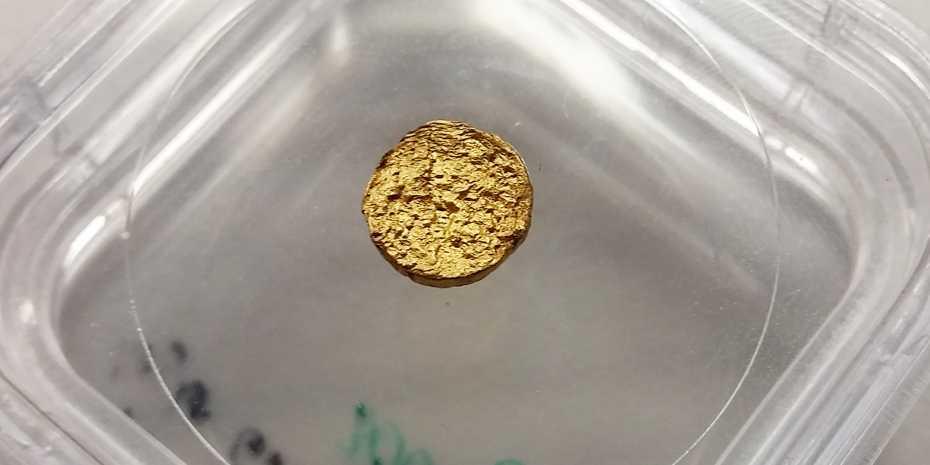Swiss scientists make 18-carat ‘plastic gold’

Five years ago researchers at the Swiss federal institute of technology (ETH Zurich) developed the lightest gold in the world, which could float on a cappuccino. But there wasn’t much they could do with it. Now they have created 18-carat light gold which can be used for watches, jewellery and electronics.
It is based on a plastic matrix that replaces metallic alloying elements, as researchers led by Leonie van’t HagExternal link explained in the journal Advanced Functional MaterialsExternal link. Protein fibres and a latex polymer form the matrix, in which plate-like gold nanocrystals are embedded.
The material also contains tiny air inclusions that are not visible to the eye. The result is real gold which is five to ten times lighter than conventional gold – usable for example for watches that don’t weigh down the wrist or jewellery that doesn’t pull on the earlobe.
“This gold has the material properties of a plastic,” says Raffaele Mezzenga, professor of Food and Soft Materials, in whose laboratory the light gold was created. If a piece of it falls onto a hard surface, it sounds like plastic. But it glimmers like metallic gold and can be polished and worked into the desired form.
Gold nanoparticle
The researchers can even adjust the hardness of the material by changing the composition of the gold. They can also replace the latex in the matrix with other plastics, such as polypropylene.
Since polypropylene liquefies at some specific temperature, “plastic gold” made with it can mimic the gold melting process, yet at much lower temperatures. Furthermore, the shape of the gold nanoparticle can change the material’s colour: “nanoplatelets” produce gold’s typical shimmer, while spherical nanoparticles of gold lend the material a violet hue.
“As a general rule, our approach lets us create almost any kind of gold we choose, in line with the desired properties,” Mezzenga says.
Mezzenga points out that, while the plastic gold will be in particular demand in the manufacture of watches and jewellery, it is also suitable for chemical catalysis, electronics applications or radiation shielding.
The researchers have applied for patents for both the process and the material.

More
Gold nanoparticles improve effectiveness of medicines

In compliance with the JTI standards
More: SWI swissinfo.ch certified by the Journalism Trust Initiative
You can find an overview of ongoing debates with our journalists here. Please join us!
If you want to start a conversation about a topic raised in this article or want to report factual errors, email us at english@swissinfo.ch.